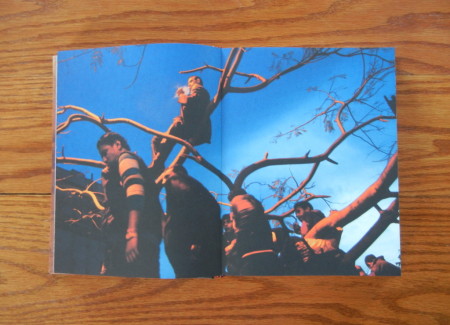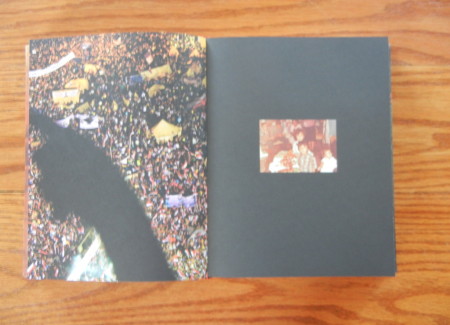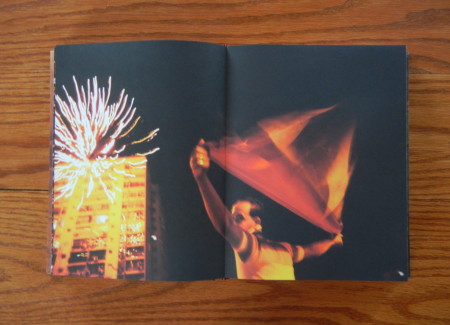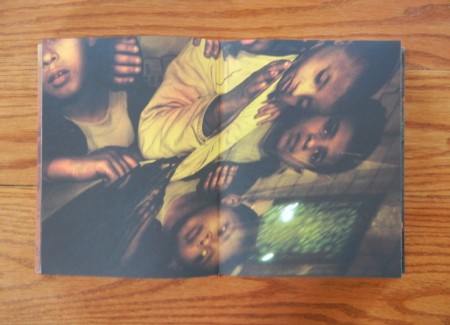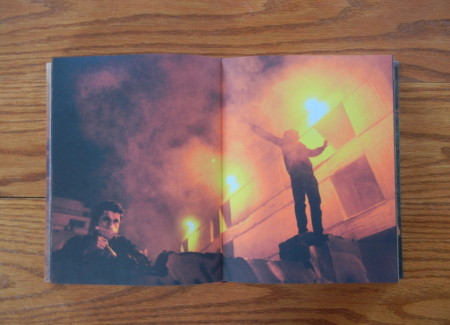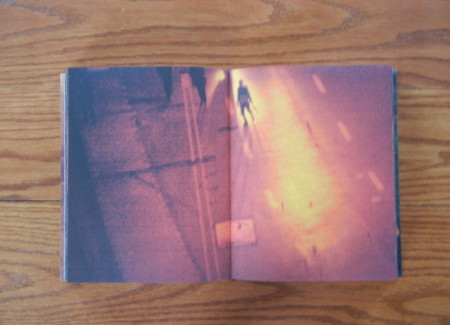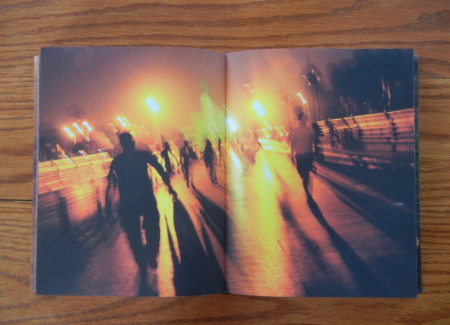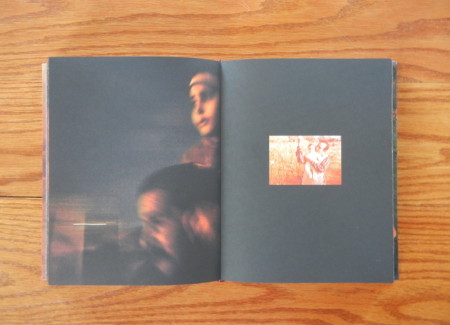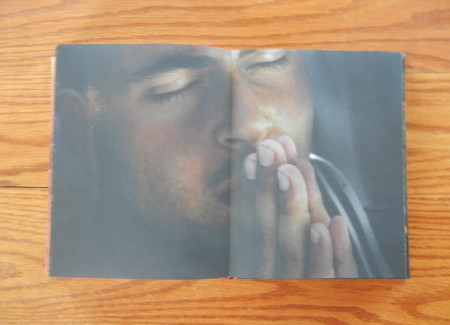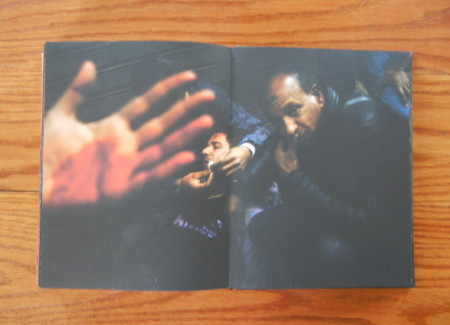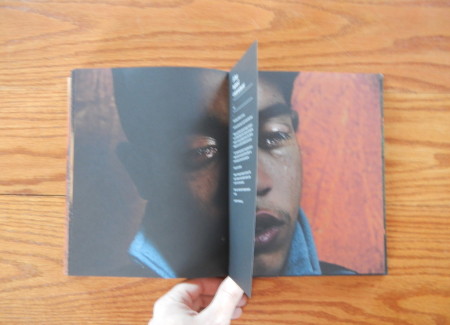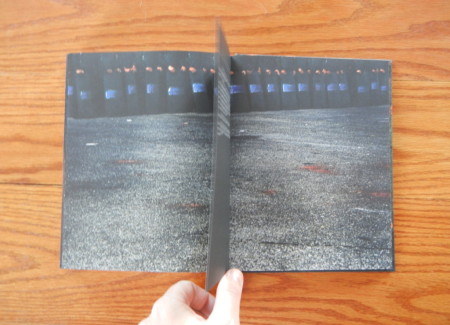JTF (just the facts): Self published in 2015 (here). Hardcover, 400 pages, with 130 black and white and color reproductions. Includes multiple texts by the artist. In an edition of 500. (Spread shots below.)
Comments/Context: For many exiles, expatriates, refugees, and foreign nationals living in the West, the individual pro-democracy revolutions in the Middle East and North Africa that came to be collectively known as the Arab Spring offered an unexpected, almost dreamlike opportunity. For these far away people who had left their homelands behind decades earlier, it was an unforseen chance to return, to bring their skills and talents back in the hopes of being part of an optimistic effort to remake their countries. Long awaited freedom from repression seemed to be coming, and that meant the opportunity to finally go home, to reconnect with the parts of themselves that had often been scarred or forgotten, and to rediscover what their home countries had become in their absence.
Laura El-Tantawy’s diaristic photobook charts just such a return, in this case, her journey back to Egypt amid the uprisings in Cairo’s Tahrir Square in 2011. It layers her highly personal story in with the larger, more universal narrative of the uprising itself, interleaving her reminiscences, reactions, and emotions in with the chaotic tumult of the masses. As an integrated artwork, it is part hazardous on-the-ground photojournalism, part expressive and poetic interpretation, and part cathartic inward-searching investigation.
El-Tantawy builds her narrative arc by adding family snapshots to her own photographs made during the protests, and it begins and ends with a sense of telescoping time – pictures that start small and incrementally grow larger and larger, the process reversed as the story comes full circle. The faded snapshots create a flashback effect, where we see sparkling memories of bygone Egypt burst up from her mind, fragments and moments that have unexpected echoes and resonances with the passions she finds in the square. We tag along as she tries to process it all, her parents and her childhood self peering in, whispering in her ear.
Her actual pictures from the demonstrations capture a roller coaster of emotions, running the gamut from euphoria to despair as the hours and days pass. At the start, the protests are largely peaceful, with dense throngs of humanity gathered together to hear speeches and exhortations, carrying banners and waving flags in patriotic support. The crowds are diverse but hopeful, agitated but energized, with fireworks dotting the night with ecstatic wonder. El-Tantawy’s photographs are overtly expressionistic, full of blurs, shadows, and movement and dominated by seeping nighttime Nan Goldin-esque colors – the black of the sky, the acidic yellow of streetlights, and the lingering swell of smoky orange and red as the brightness fades. We follow upturned faces, outstretched arms, joyous cheering, and angry shouting, all swirled together into a purposeful, expectant visual brew.
But as the pro-government soldiers and riot police start to make their presence known, the passions of the crowd become even more heated, and soon images of rock throwing rebels, tear gas clouds, and gun toting enforcers take over. It’s here that the book turns darker and more claustrophobic, the polarized emotions of the two sides creating flash points of conflict in the creeping darkness. Shadowy forms gather in middle-of-the-street standoffs and fearful faces watch from the sidelines, not entirely understanding how things escalated so quickly and not knowing what might come next.
As the battle comes to a head, El-Tantawy offers us a brief interlude, a series of close up faces of various participants and protestors that allows us to catch our breath. Gone are the upturned faces of expectation and optimism; they have been replaced with anxiety and despair, tears and resignation, disillusionment and silent prayer. We then encounter the bloody wounded (and worse), and the personal sacrifices and shocking consequences of the clashes start to hit home: a boy loses his eye, crumpled bodies lie in the street, fires rage, and bloody stains litter the pavement. In the end, El-Tantawy sees only faces full of weary consternation, going in opposite directions rather than converging. The confident hope she brought with her seems to have evaporated, deadened by all that she has seen and experienced.
For El-Tantawy, the intimacy of the violence she experienced in the square seems to have been transformative and resolving, moving her from naïvely wide eyed to dispassionately jaded in one burst of intense energy. In her mind, replacing one dictator with another wasn’t enough, and even if the larger motives were admirable, it seems that change will come too slowly to suit her – her coda is a kiss goodbye to the memories she once held dear rather than a redoubled commitment to fight on. As a result, in the end, her photobook feels more cautionary than celebratory, the Egypt she so desperately wanted to find lost to the chaos of continued conflict.
For those of us that only know the events in Tahrir Square from the newspaper and TV reporting from those days, El-Tantawy’s account is viscerally more personal and inconclusive – it breathes with surging, unruly life, and comes away without pat answers or easy conclusions. Like many of the great stories of war, it is steeped in the confounding and often dispiriting notion that “even if we win, we lose”, and she ends the book on an elegiac note, with her city fading back into the depths of memory like the sun setting on an afternoon picnic. As an artistic statement about the complexities of these recent revolutions, it is both expressively powerful and searingly and authentically conflicted.
Collector’s POV: Laura El-Tantawy does not appear to have gallery representation at this time. As a result, interested collectors should likely follow up with the artist directly via her website (linked in the sidebar above).


